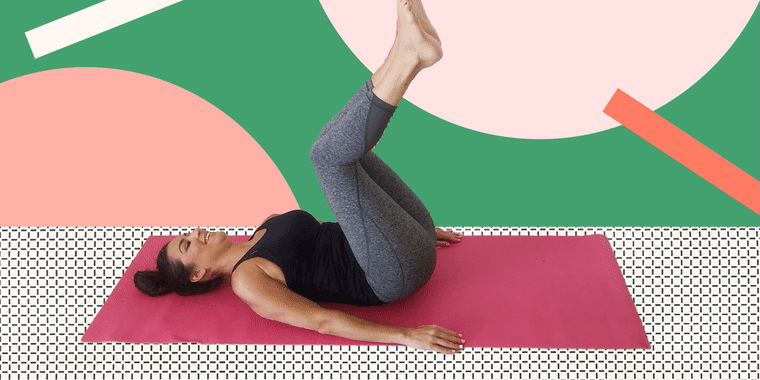Welcome to Start TODAY. Sign up for our free Start TODAY newsletter to receive daily inspiration sent to your inbox — and join us on Instagram!
Neck pain is one of the most common complaints I hear from people when performing ab exercises. Unfortunately, many effective core workouts are easy to perform incorrectly and this can lead to undue stress being placed on the neck and back.
Crunches are one of these exercises.
While they are popular (and can be effective when performed correctly!), research suggests that standard abdominal crunches increase the risk of low-back pain. As a personal trainer, I've seen that when crunches are not performed correctly, they can definitely wreak havoc on the neck and low back.
So when I hear people complain of pain, I like to recommend reverse crunches instead. This variation on the standard crunch will still work your abs, but reduces the risk of injury.
What are reverse crunches? It's essentially the opposite movement of a standard crunch. In a reverse crunch, you lift your knees up toward your chest, instead of lifting your shoulders and neck off the floor toward your knees. This gives your neck a rest and makes it less likely you will put undue stress on the back while trying to target the abs.
Reverse crunches muscles worked
Reverse crunches can help strengthen the core without straining your neck and low back. This move activates the obliques and major abdominal muscles for a strong, toned core region.
A strong core is essential for balance and stability in daily life. Whether it be intense physical activity or daily chores, a strong core can help you move more efficiently while maintaining good posture. When performed consistently, reverse crunches can be a great first step toward a stronger core.
The common mistakes people make when doing reverse crunches
In order to reap all the benefits of the reverse crunch, the move must be performed slowly and accurately. I see a lot of my weight-loss clients relying on momentum when performing the reverse crunch instead of engaging the core. This takes away from the effectiveness of the move.
A lot of my clients also struggle with knowing how far off the ground to raise their hips and legs. This is the reason I recommend going slowly when practicing the reverse crunch. Here are some tips to keep in mind:
- Take it slow! Make sure each upward movement comes from squeezing the abs instead of momentum from swinging the legs.
- Don’t lift your hips too far off the ground. When a lot of your back loses contact with the mat, you’ve lifted too far. Focus on tilting your pelvis forward and crunching just far enough that your tailbone lifts off the ground.
- When releasing, don’t allow your knees to move past your hips too fast. Keeping your lower body in a controlled movement will help engage your core more effectively.
How to do a modified reverse crunch
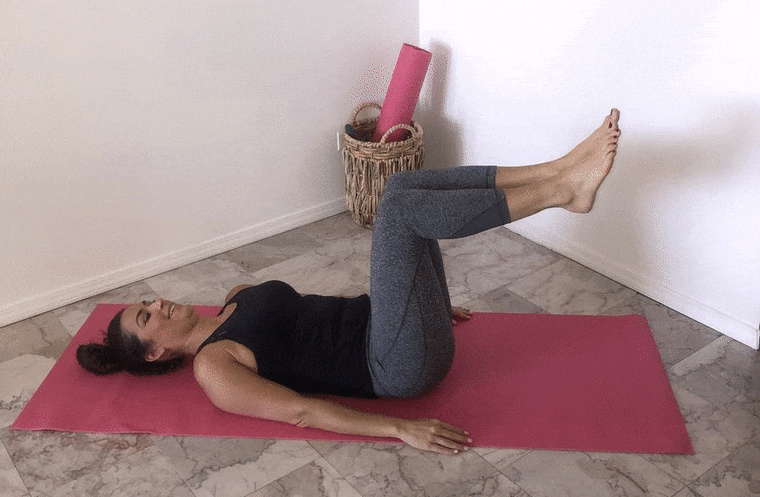
Reverse crunches can be difficult for those who don’t consistently work their core. But if the reverse crunch seems too challenging, it’s very easy to modify. The modified version involves all of the same movements, you simply decrease the range of motion. When practicing the move, only crunch your hips and legs up as far as you’re comfortable with, that may be half way or even a quarter of the way you raise them in the full movement.
How to do reverse crunches
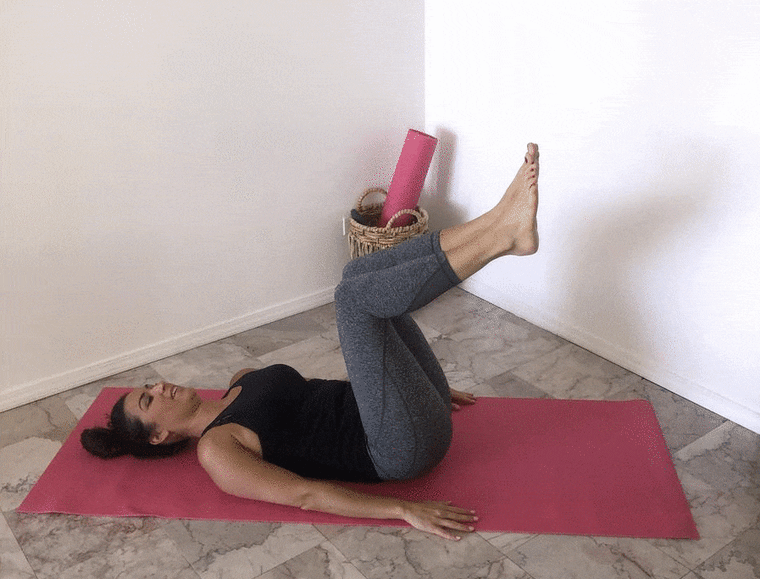
Follow the steps below to perform the reverse crunch. Remember to take it slow and control your momentum.
- Lie on your back with your arms at your sides.
- With your knees bent, squeeze your abs and raise your legs so that your knees are hovering over your hips at a 90-degree angle. Keep your calves parallel to the mat so that your legs are in a tabletop position.
- Engage your core as you lift your hips and knees toward your chest. Think of tilting your pelvis forward. Keep your entire upper body on the ground. Make sure that only the lowest part of your back comes off the ground; nothing higher.
- Keep the legs at a 90-degree angle throughout the entire movement as you come back down, through tabletop, and tap the feet on the ground.
- Repeat the steps, remembering to breathe slowly while squeezing your abdominals.
4 reverse crunch exercises
There are plenty of exercises that are similar to the reverse crunch. When working on core strength, I recommend performing these four moves until you feel confident enough to perform the reverse crunch without any modifications.
Bicycle crunch
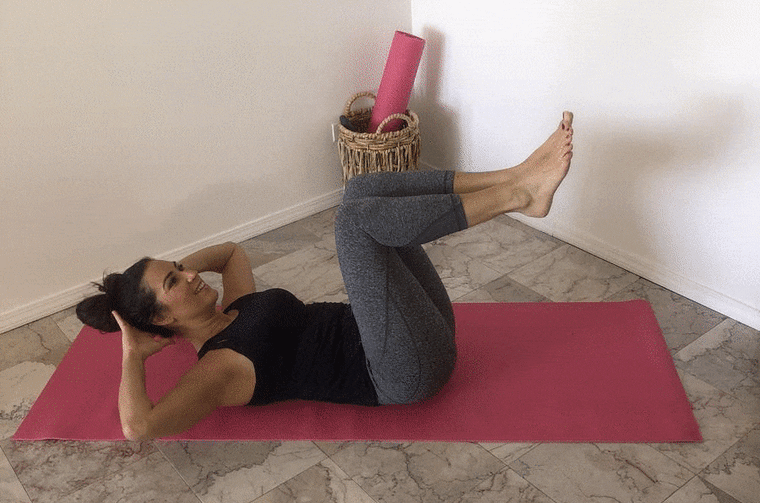
Start by lying flat on your back with your legs in tabletop position and your hands behind your head. Bend the left knee and straighten the right leg at a 45-degree angle, while also crunching your right elbow toward your left knee. Return to start, then bend the right knee in toward your chest while straightening the left leg at a 45-degree angle, crunching the left elbow to meet the right knee. Alternate legs as you continue your bicycle motion ten times on each side. Make sure to go slow, squeezing your core with every movement.
Wall sit
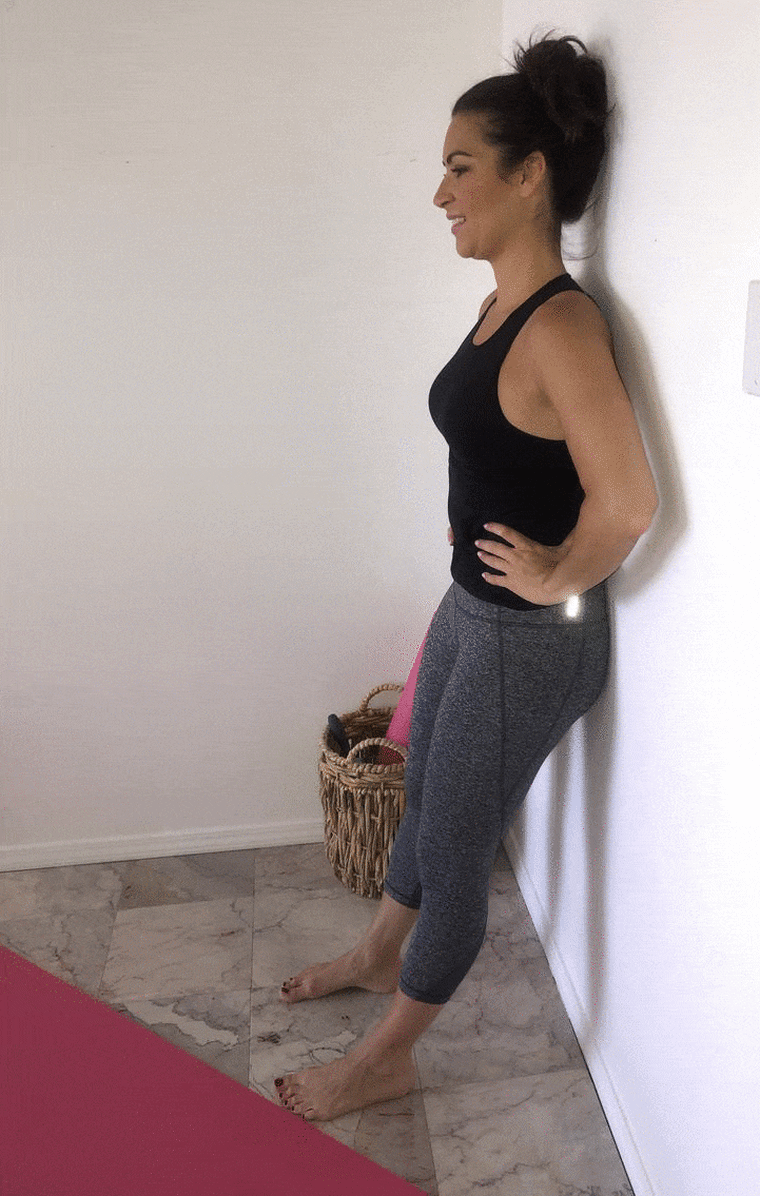
The wall sit is helpful to build balance and strength in the low back and core. Lean your back against a wall and sit down into a squat position as if sitting into a chair. Keep your low back pressed into the wall and your knees bent (somewhere between a 45- and 90-degree angle). Squeeze your core. Hold for 30 seconds, or as long as you can.
Mountain climbers
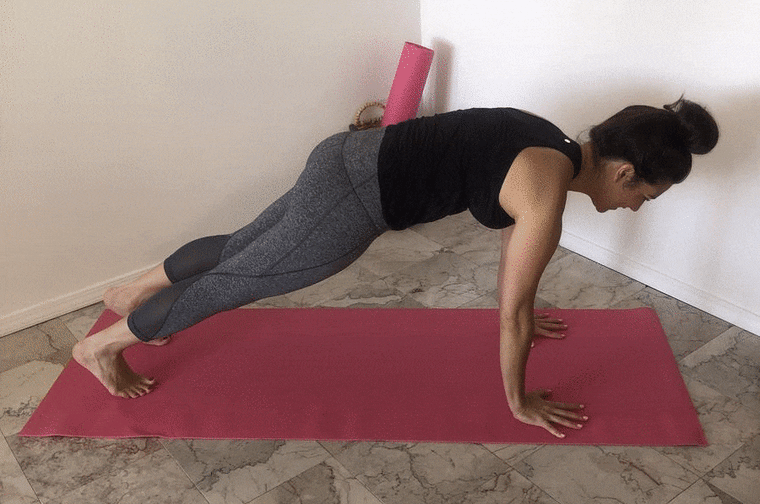
Mountain climbers involve the same type of lower-body motion as the reverse crunch. Begin in plank position. Bend one knee, bringing it toward your chest. Return to a plank position, then bring the alternate knee to your chest. Alternate legs, squeezing your core, performing 20 climbers total.
Oblique twists
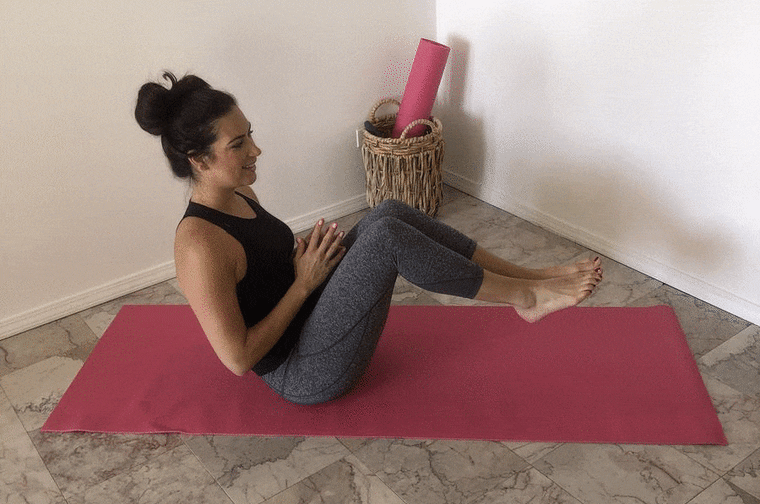
Sit on the mat with your knees bent and your feet raised off the floor. Pull your abs in and lift your shins to a 45-degree angle. Squeeze your abs, and twist your torso to the right, tapping the floor with your hands. Then twist your torso to the left, tapping the floor with your hands. Continue this motion from side to side, making sure to keep your head, arms and core aligned the entire time. To make this move more challenging, hold a weight in front of your chest as you move from side to side.
